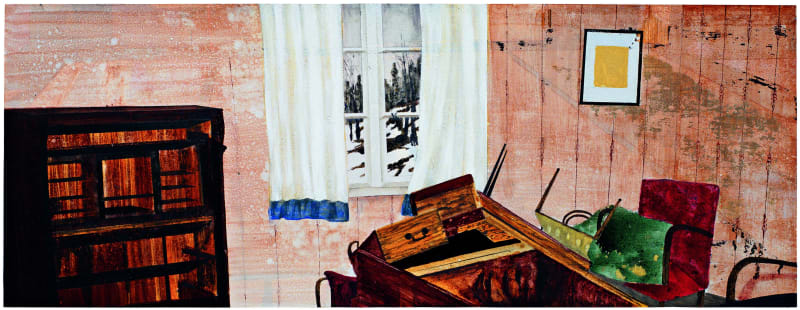Works by: Richard Aldrich, Mamma Andersson, Helene Appel, Michael Bauer, Luca Bertolo, Joe Bradley, Peter Linde Busk, Pierpaolo Campanini, William Daniels, Avner Ben – Gal, Thomas Helbig, Merlin James, Rezi van Lankveld, Katy Moran, Marco Neri, Alessandro Pessoli, Tal R, Matthias Weischer
How does painting reinvent its strategies of representation and narration? Can we talk of a current tendency in approaching the medium that cautiously evokes figuration, and which is at the same time analytical and somehow meta-pictorial? Or, on the contrary, the approach to figuration is incidental, careless almost, and automatic, which in a way is still a form of caution, and prudence, in addressing the painted image? Is it possible that the urge to paint a figure, to describe, to indicate, stands next to the surfacing of a problem: that of still considering the painting as a window, an organic and coherent space in which narration and representation are displayed? And is it really nonsensical to talk of figuration and abstraction, today?
The exhibition follows a path that arises from these questions. Within the rooms of the museum it presents works, or series of works, that can help us to recompose the idea of figuration as inevitable: for example, works that wed figuration to the idea of the act of painting and of the painting itself as an object, in all its materiality; works that contain gaps, or unresolved zones that suggest something left unfinished; paintings in which the figurative aspect emerges by adjustments, improvisation or fleeting references from abstraction, that is to say from a inhomogeneous and potentially unlimited space; paintings that, though figurative, have areas that open up or make frequent gestures towards abstraction; and finally, works that bear witness to a conflict, attempting to resist the image and the figure. These are all aspects and questions of interest not only in our day, for they take us back to a history of painting in which both the artist and the spectator are still involved.
More information:
www.centropecci.it/uk/home.htm


